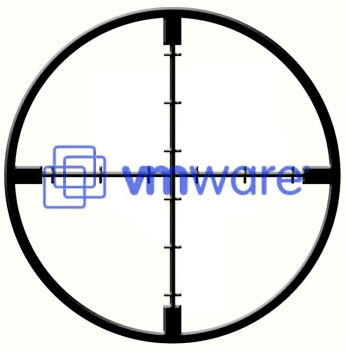Hyper-V: It's here


We looked at a late beta of Hyper-V back in February of this year and at the time, we were impressed with the system's performance and ease of use. It made such a lasting impression that it was clear to me at least in this particular instance, Microsoft has done this one right, and poses a clear threat to VMWare in terms of being able to carve out a significant slice of their market share with a large base of eager early adopters.
Click on the "Read the rest of this entry" link below for more.
Why so eager? Well, it all comes down to numbers. Hyper-V is just plain less expensive to implement than VMWare ESX Server, and that could make a big difference, this despite the fact that it currently lacks the "live migration" capabilities that ESX has with VMotion and doesn't include a clustered file system like VMFS-3 (although Microsoft has confirmed that both Polyserve and Sanbolic cluster solutions are compatible). How less expensive, you ask? When using Hyper-V on Windows Server 2008 Datacenter, which works out to about $3000 per processor (Microsoft makes no distinction with "cores" -- if you have a dual CPU, quad-core system you only have two processors, as far as their licensing is concerned) you get use of unlimited licenses of Windows Server 2008 and Windows Server 2003 R2. The deal gets even sweeter when you have a Microsoft Enterprise Agreement, which brings the cost of new Hyper-V hosts down to nothing.
Hyper-V could make quick headway in enterprise environments that either haven't yet made a significant investment in VMWare Virtual Infrastructure, or are looking to virtualize Exchange, SQL Server, IIS and Sharepoint systems on a vendor-supported virtualization platform. Up until now, Microsoft hasn't even supported production database server application stacks on even their own Virtual Server platform, let alone on VMWare ESX, due to poor performance of these environments when virtualized because of heavy I/O contention. However, with Hyper-V, the performance and memory overhead on database virtualization appears to have been significantly reduced, this because of tight integration with the OS which only Microsoft has the ability to engineer.
Microsoft has finally released some independently verified I/O performance benchmarks on Hyper-V, and the results are encouraging. These were conducted by QLOGIC using their own host bus adapters and SAN chassis, using typical customer deployment scenarios.
Click on the above table to enlarge.
Overall, VMs running under Hyper-V achieved anywhere from 88%-97% of native performance when using 8GB fiber channel connectivity, and 99% native performance when using iSCSI over single 1GB, unbonded direct LUN connection. No performance numbers have yet been released for Hyper-V when using multipath-I/O HBAs or bonded iSCSI on other popular SAN configurations, such as on EMC's CLARiiON/DMX, HP's EVA or IBM's DS8000 and SVC, but this does look like the barriers to SQL Server and other I/O intensive apps such as Exchange and Sharepoint being virtualized have now been lifted -- although Microsoft suggests that you use fixed VHD files or "Passthrough" disks -- dedicated raw disk parititions on local disks or SAN LUNs to run the VMs.
Hyper-V does have one drawback, in that it will only run on the 64-bit version of Windows Server 2008, because it makes heavy use of Intel VT-X and AMD-V on chip virtualization acceleration features, which are only present in newer 64-bit CPUs.
While no new features have been announced with the official release since the betas and release candidates, significant guest OS support has been added, notably with the addition of Windows Vista in both 32-bit and 64-bit versions:
Windows Server 2008 x86 (1, 2 or 4-way SMP)
Windows Server 2008 x64 (1, 2 or 4-way SMP)
Windows Server 2003 x86 (1 or 2-way SMP)
Windows Server 2003 x64 (1 or 2-way SMP)
Windows Vista x64 with Service Pack 1 (1 or 2-way SMP)
Windows Vista x86 with Service Pack 1 (1 or 2-way SMP)
Windows XP x64 with Service Pack 2 (1 or 2-way SMP)
Windows XP x86 with Service Pack 3 (1 or 2-way SMP)
Windows XP x86 with Service Pack 2 (1-way only)
Windows Server 2000 with Service Pack 4 (1-way only)
SUSE Linux Enterprise Server 10 with Service Pack 1 x86
SUSE Linux Enterprise Server 10 with Service Pack 1 x64
SUSE Linux Enterprise Server 10 with Service Pack 2 x86
SUSE Linux Enterprise Server 10 with Service Pack 2 x64
Are you going to be a Hyper-V early adopter? Talk Back and let me know.